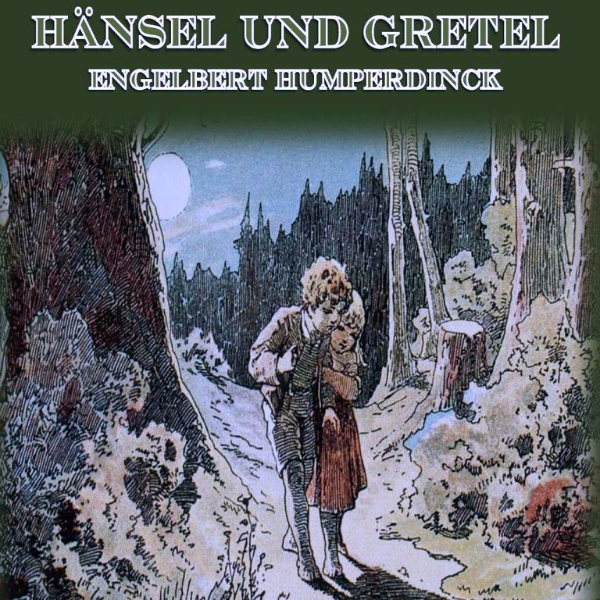
Overview
Synopsis
Hänsel und Gretel is a fairy tale opera that follows two young siblings, Hänsel and Gretel, as they get lost in the forest after being chased out of the house for bothering their mother. In their quest to pick and gather strawberries, the children become lost in the woods, reknown for being the home to an evil Witch who eats children. After meeting some other magical characters, the children come across a delicious gingerbread house, where a kind old woman lives. They are invited inside to enjoy a smorgasbord of sweets and treats, only to discover that their host is the evil Witch. She puts a spell on the children, making them eat until their are plump so that she can cook them to perfection. The children manage to conquer the Witch, and their parents find them, all celebrating their freedom.
Show Information
Context
Hänsel und Gretel is one of the most famous fairy tales told to children all over the world. The opera was composed by Engelbert Humperdinck, who was originally inspired by his sister to produce the work. His sister, Adelheid Wette, wrote some text based on the story of Hansel and Gretel as a gift for her children for Christmas, and wanted Humperdinck to set them to music, After working on it and embellishing the piece, the songs were connected and turned into a full opera. The libretto of
to read the context for Hänsel und Gretel and to unlock other amazing theatre resources!Plot
Act I (At Home):
Hänsel and Gretel are at home trying to finish their chores. Hänsel is very hungry and complaining loudly about it, so Gretel shows him a jug of milk that was brought to the family by a neighbor. Knowing that the food is there, they decide to dance out of joy and to distract themselves. While they are dancing, their Mother comes home and yells at them, frustrated by the fact that they have done so little work. While she is scolding them, the children accidentally knock
to read the plot for Hänsel und Gretel and to unlock other amazing theatre resources!Characters
| Name | Part Size | Gender | Vocal Part |
|---|---|---|---|
|
Lead |
Female |
Mezzo-Soprano |
|
|
Lead |
Female |
Soprano |
|
|
Lead |
Female |
Mezzo-Soprano |
|
|
Supporting |
Male |
Baritone |
|
|
Supporting |
Female |
Mezzo-Soprano |
|
|
Featured |
Female |
Soprano |
|
|
Featured |
Female |
Soprano |
|
|
Ensemble |
Either Gender |
|
Songs
Overture (Vorspiel)
- Act I, Scene i: At Home (Gretel, Hänsel)
- Act I, Scene ii: At Home (Mother, Hänsel, Gretel)
- Act I, Scene iii: At Home (Father, Mother)
- Act II, Scene i: In the Woods (Gretel, Hänsel, Echo)
- Act II, Scene ii: In the Woods (Sandman, Hänsel, Gretel)
- Act II, Scene iii: In the Woods (Orchestra)
- Act III, Scene i: The Witch’s House (Dewman, Gretel, Hänsel) Act III, Scene ii: The Witch’s House (Hänsel, Gretel) Act III, Scene iii; The Witch’s House (Hänsel, Gretel, The Witch) Act III, Scene iv: The Gingerbread Children (Gretel, Hänsel, The Gingerbread Children) Act III, Scene v: Finale (Hänsel, Gretel, Mother, Father, The Gingerbread Children)
A song with an asterisk (*) before the title indicates a dance number; a character listed in a song with an asterisk (*) by the character's name indicates that the character exclusively serves as a dancer in this song, which is sung by other characters.
Monologues
Scenes
Key Terms
A genre of story involving magical and fantastical elements, sometimes adapted for theatrical performance.
Videos
Quizzes
Themes, Symbols & Motifs
Sorry! We do not currently have learning modules for this guide.
Quote Analysis
Sorry! We do not currently have learning modules for this guide.
